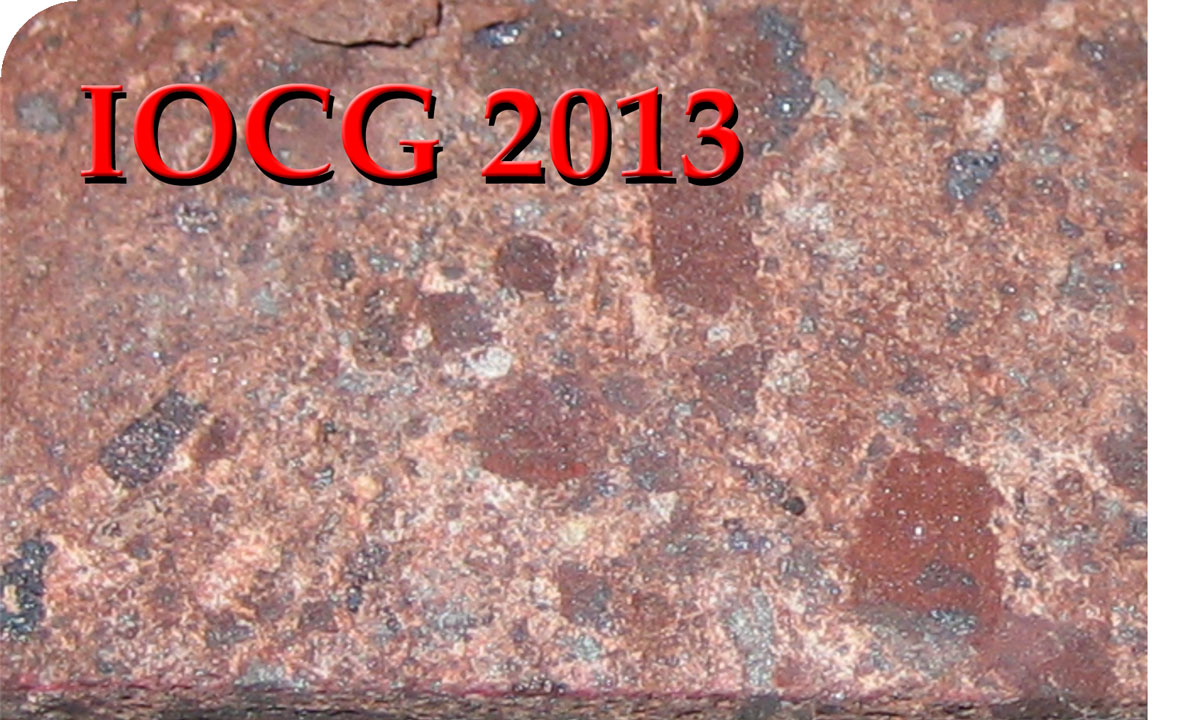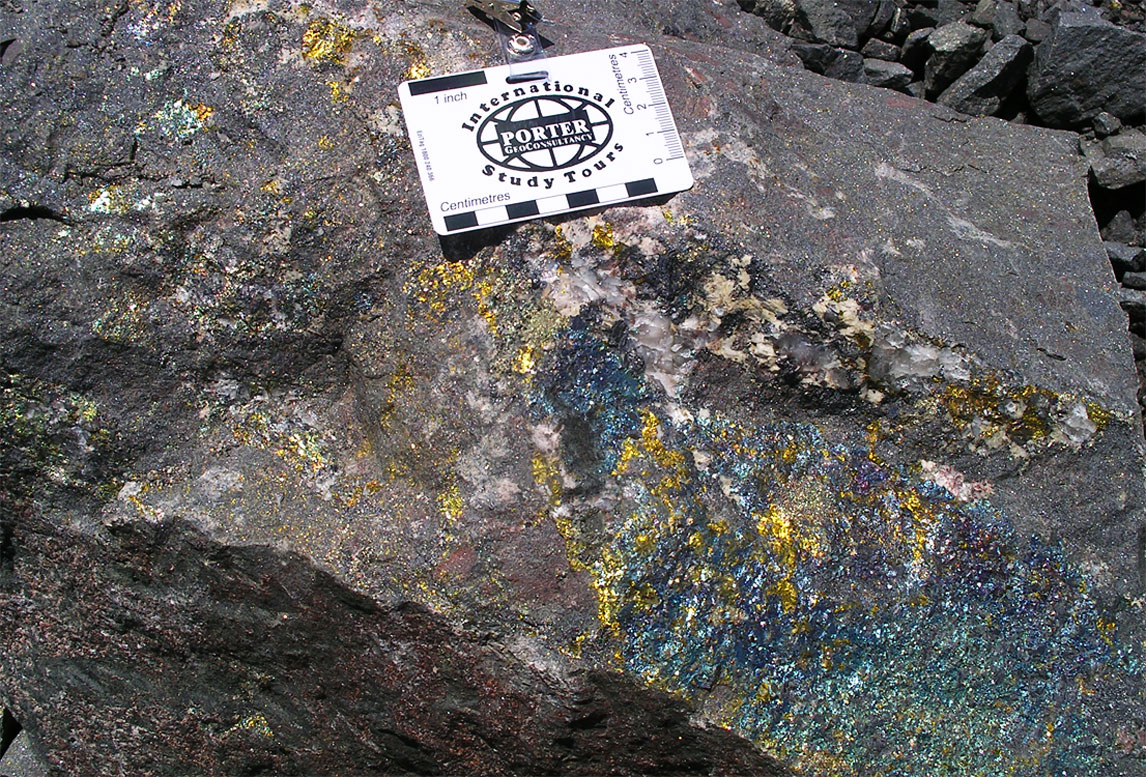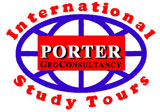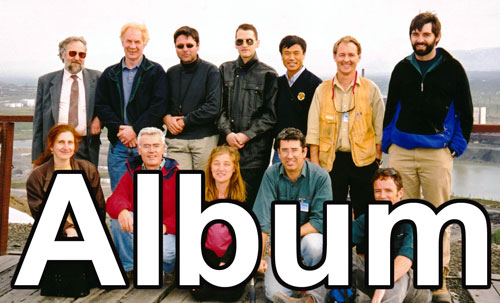
Porter GeoConsultancy continued its International Study Tour series of professional development courses during February 2013 by visiting a representative selection of the different styles, and the most important examples, of iron oxide copper-gold deposits of the Gawler-Curnamona craton in South Australia and the Eastern Fold Belt of the Mount Isa Inlier in NW Queensland.

The mine and project visits were complemented by field and classroom workshops presented by experts from academia, government geological surveys and industry.

The full tour commenced in Adelaide, South Australia on the evening of Monday 18 February, 2013 and ended in Brisbane, Queensland, on the evening of Wednesday 27 February.

This professional development course was available to all geologists, world wide, who were able to take any 3 or more consecutive days, up to the full tour, as suited their availability, budgets and interest.

 Photo Album - who went and what they saw, Photo Album - who went and what they saw,

The tour involved the following:


 Adelaide Overview Workshop - full day, see below; Adelaide Overview Workshop - full day, see below;

 Hillside, Yorke Peninsula, SA, hosted in discrete, laterally and vertically continuous, structures with associated iron oxide and skarn alteration; Hillside, Yorke Peninsula, SA, hosted in discrete, laterally and vertically continuous, structures with associated iron oxide and skarn alteration;

 Carrapateena, northern SA., a near vertically plunging, oval shaped pipe, hosted by strongly brecciated, hematite altered older granitoid; Carrapateena, northern SA., a near vertically plunging, oval shaped pipe, hosted by strongly brecciated, hematite altered older granitoid;

 Olympic Dam, northern SA., a relatively flat, sheet-like resource, near the top of a downward tapering, hematite altered, granitoid breccia complex; Olympic Dam, northern SA., a relatively flat, sheet-like resource, near the top of a downward tapering, hematite altered, granitoid breccia complex;

 Prominent Hill, northern SA., steeply dipping, thick, conformable, tabular bodies of mineralised and hematite altered sedimentary breccia; Prominent Hill, northern SA., steeply dipping, thick, conformable, tabular bodies of mineralised and hematite altered sedimentary breccia;

 Cloncurry Workshop - full day, see below; Cloncurry Workshop - full day, see below;

 Ernest Henry NW Queensland, a 45° plunging, cylindrical, mineralised, magnetite altered, breccia pipe hosted in metavolcanics; Ernest Henry NW Queensland, a 45° plunging, cylindrical, mineralised, magnetite altered, breccia pipe hosted in metavolcanics;

 Mount Margaret - E1, NW Qld, a series of steeply dipping lenses of folded, brecciated and mineralised magnetite altered volcanics and sediments; Mount Margaret - E1, NW Qld, a series of steeply dipping lenses of folded, brecciated and mineralised magnetite altered volcanics and sediments;

 Mount Elliot, NW Qld, magnetite altered breccia, banded/replacement and late vein mineralisation in siliciclastic, carbonate and volcanic hosts; Mount Elliot, NW Qld, magnetite altered breccia, banded/replacement and late vein mineralisation in siliciclastic, carbonate and volcanic hosts;

 Roseby, NW Qld, corridor of veined, disseminated and supergene mineralisation in hematite altered calc-silicates, siliciclastics and minor volcanics; Roseby, NW Qld, corridor of veined, disseminated and supergene mineralisation in hematite altered calc-silicates, siliciclastics and minor volcanics;

|
Adelaide Overview Workshop - Hosted by the Geological Survey of South Australia.

This workshop comprised:
• A global overview of the occurrence of Iron Oxide Copper-Gold and related Iron-oxide Associated, Alkali-altered mineralised systems by Mike Porter;
• Overview presentations on the tectonics, geology and geophysical expression of the Gawler-Curnamona craton, and the distribution and controls of IOCG mineralisation in the craton as a whole, and within individual districts, delivered by SA Geological Survey specialists Martin Fairclough (Chief Geoscientist), Adrian Fabris, Simon van der Weilan and Claire Wade, and expert consultant Dr Colin Conor;
• An outline of the geology and mineralisation of significant IOCG and related occurrences from the Olympic IOCG Province, other than those to be visited. These included:
- magnetite deposits devoid of Cu-Au (<500 ppm Cu) mineralisation (e.g., Murdie Murdie);
- magnetite ±hematite with 0.1 to 0.3% Cu throughout (e.g., Titan and Manxman A1); and
- magnetite ±hematite with sub-economic to economic byproduct Cu-Au (e.g., Emmie Bluff and Cairn Hill);
• Inspection of drill core through the deposits described in the previous point that is held at the SA Geological Survey core library;
• Expert presentation and study of drill core from the Kalkaroo deposit, including its regional setting within the Curnamona Province (Dr Chris Giles of Havilah Resources). Kalkaroo (see description from the link above) is a significant deposit in advanced feasibility with a total resource of 124.51 Mt @ 0.50% Cu, 0.39 g/t Au. The presentation included a detailed demonstration of the deposit using the Vulcan 3D ore model with all data. The deposit is located on a featureless arid plain below cover, with no outcrop, and hence an actual site visit was not undertaken.
|
|
 Cloncurry Overview Workshop - Led by Dr Nick Oliver (of Holcombe-Coughlin-Oliver).
Cloncurry Overview Workshop - Led by Dr Nick Oliver (of Holcombe-Coughlin-Oliver).

This workshop comprised:
• An overview of the key characteristics and origins of IOCG deposits,
• The geology and IOCG deposits of the Cloncurry district - including:
- regional to local setting,
- key geological and geochemical aspects relative to IOCG mineralisation,
- distribution and controls on alteration and mineralisation in the Cloncurry terrane,
- context to deposits on itinerary, but also those not visited (e.g., Osborne, Eloise)
- characteristics pertinent to exploration,
• Interspersed field visits to nearby geological features in the immediate Cloncurry town vicinity and to the Gilded Rose area, southeast of Cloncurry, where extensive brecciation, similar to that associated with IOCG-style mineralisation in the Cloncurry district, has been developed. This brecciation apparently emanates from the margins of a Williams-Naraku batholith granitoid batholith. These visits allowed the group to study the characteristics of the breccias and their field relationships.
|
|














